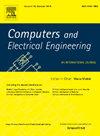Short-term optimal operation of phase shifting soft open point with high accuracy loss model in unbalanced distribution networks
IF 4
3区 计算机科学
Q1 COMPUTER SCIENCE, HARDWARE & ARCHITECTURE
引用次数: 0
Abstract
This paper examines the issues associated with unbalanced operations in distribution networks (DNs), which arise from inconsistencies in loads, resources, and configurations. This is particularly relevant in the context of peer-to-peer (P2P) trading, which may introduce security vulnerabilities and exacerbate existing imbalances. To improve the secure and efficient operation of DNs, we propose a short-term optimal operation model that integrates P2P transactions and emphasizes the physical layer of trading. The study assesses the effectiveness of a developed phase shifting-soft open point (PS-SOP) in enhancing operational flexibility and quantifies the related losses, including conduction and switching losses associated with semiconductor switches. By employing a deep neural network (DNN), these losses are converted into linear constraints suitable for incorporation into the convex optimization framework. An AC optimal power flow model is constructed to identify optimal power transfer sequences, which is framed as a mixed-integer linear programming problem to evaluate the PS-SOP's influence on voltage imbalance reduction, loss minimization, and facilitation of P2P transactions. Numerical simulations are conducted on two IEEE test networks to validate the proposed method's efficacy. For scenarios involving multi-terminal PS-SOP, all P2P transactions are successfully executed in the IEEE 13-bus network, and a 97.55 % authorization rate is achieved in the IEEE 123-bus network. The SOP loss derived from the DNN exhibits a negligible discrepancy of 2.54 % compared to nonlinear loss formulations, underscoring the model's precision and dependability.

不平衡配电网高精度损耗模型移相软开点短期优化运行
本文研究了与配电网络(DNs)中不平衡操作相关的问题,这些问题是由负载、资源和配置的不一致引起的。这在点对点(P2P)交易的背景下尤其相关,这可能会引入安全漏洞并加剧现有的不平衡。为了提高DNs的安全高效运行,我们提出了一种整合P2P交易并强调交易物理层的短期最优运行模型。该研究评估了开发的相移软开点(PS-SOP)在提高操作灵活性方面的有效性,并量化了相关损耗,包括与半导体开关相关的传导和开关损耗。通过使用深度神经网络(DNN),这些损失被转换为适合纳入凸优化框架的线性约束。建立交流最优潮流模型,确定最优输电序列,并将其构建为一个混合整数线性规划问题,以评估PS-SOP对降低电压不平衡、最小化损耗和促进P2P交易的影响。在两个IEEE测试网络上进行了数值仿真,验证了该方法的有效性。对于多终端PS-SOP场景,在IEEE 13总线网络中,所有P2P交易都成功执行,在IEEE 123总线网络中,授权率达到97.55%。与非线性损失公式相比,DNN得出的SOP损失显示出2.54%的可忽略不计的差异,强调了模型的精度和可靠性。
本文章由计算机程序翻译,如有差异,请以英文原文为准。
求助全文
约1分钟内获得全文
求助全文
来源期刊

Computers & Electrical Engineering
工程技术-工程:电子与电气
CiteScore
9.20
自引率
7.00%
发文量
661
审稿时长
47 days
期刊介绍:
The impact of computers has nowhere been more revolutionary than in electrical engineering. The design, analysis, and operation of electrical and electronic systems are now dominated by computers, a transformation that has been motivated by the natural ease of interface between computers and electrical systems, and the promise of spectacular improvements in speed and efficiency.
Published since 1973, Computers & Electrical Engineering provides rapid publication of topical research into the integration of computer technology and computational techniques with electrical and electronic systems. The journal publishes papers featuring novel implementations of computers and computational techniques in areas like signal and image processing, high-performance computing, parallel processing, and communications. Special attention will be paid to papers describing innovative architectures, algorithms, and software tools.
 求助内容:
求助内容: 应助结果提醒方式:
应助结果提醒方式:


